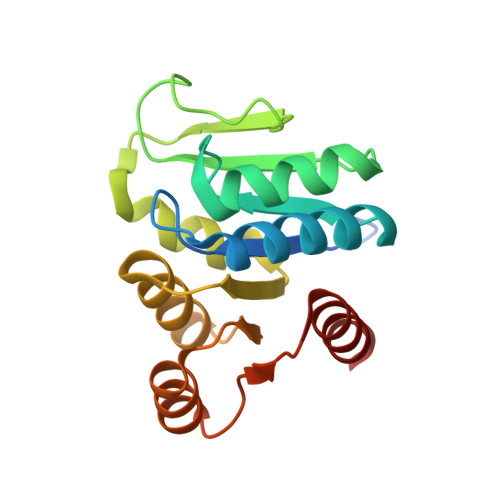The structure of the Moco carrier protein from Rippkaea orientalis.
Krausze, J., Hercher, T.W., Archna, A., Kruse, T.(2020) Acta Crystallogr F Struct Biol Commun 76: 453-463
- PubMed: 32880594
- DOI: https://doi.org/10.1107/S2053230X20011073
- Primary Citation of Related Structures:
6Y01 - PubMed Abstract:
The molybdenum cofactor (Moco) is the prosthetic group of all molybdenum-dependent enzymes except for nitrogenase. The multistep biosynthesis pathway of Moco and its function in molybdenum-dependent enzymes are already well understood. The mechanisms of Moco transfer, storage and insertion, on the other hand, are not. In the cell, Moco is usually not found in its free form and remains bound to proteins because of its sensitivity to oxidation. The green alga Chlamydomonas reinhardtii harbors a Moco carrier protein (MCP) that binds and protects Moco but is devoid of enzymatic function. It has been speculated that this MCP acts as a means of Moco storage and transport. Here, the search for potential MCPs has been extended to the prokaryotes, and many MCPs were found in cyanobacteria. A putative MCP from Rippkaea orientalis (RoMCP) was selected for recombinant production, crystallization and structure determination. RoMCP has a Rossmann-fold topology that is characteristic of nucleotide-binding proteins and a homotetrameric quaternary structure similar to that of the MCP from C. reinhardtii. In each protomer, a positively charged crevice was identified that accommodates up to three chloride ions, hinting at a potential Moco-binding site. Computational docking experiments supported this notion and gave an impression of the RoMCP-Moco complex.
Organizational Affiliation:
Institute of Plant Biology, TU Braunschweig, 38106 Braunschweig, Germany.
















